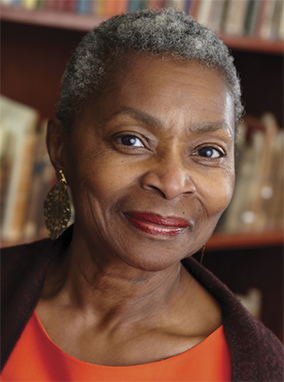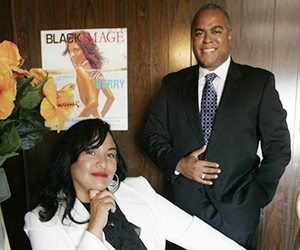HISTORIC BLACK VEGAS: Black Wall Street
March 25, 2024 by agutting@reviewjournal.com
Filed under Community
BY CLAYTEE D. WHITE
On a Saturday evening in February, I attended a presentation by archaeologist Alicia Odewale, PhD. She is investigating the 1921 race riot in the Black town of Greenwood, just across the tracks from Tulsa, Oklahoma.
The scream of a white female elevator operator, when her Black male passenger lost his balance, led to his arrest. Because the elevator didn’t stop evenly at a landing, he stumbled and grabbed her arm as he exited — and tragically, her story (that nothing happened, and that he should be released) did not quell the harsh atmospheric tensions. Both the Black and white communities armed themselves. The firepower of the White community, which included dropping incendiary devices from aircraft, overwhelmed the Black community’s defensive measures. Thus, the white barrage of the Greenwood community destroyed businesses, homes, and carted off Blacks to internment camps. There is a film, a “60 Minutes” episode, and a wealth of writings about the attack on Black Wall Street.
The Smith Center presentation, produced by National Geographic, was stellar. It allowed audience interaction, but Dr. Odewale was spirited away too soon. We could have conversed with her for the rest of the night.
Beginning in 1919, this period is sometimes called the Red Summer because there were these kinds of attacks by Whites on Black communities in over two dozen cities across the United States. The National WWI Museum and Memorial traces the cause to Black soldiers returning from the war in Europe with a bit of a swagger and may have been unwilling to submit to the typical Jim Crow treatment of that era. The second reason was related to the Black migration from the South that created competition for jobs in northern cities and exhausted the supply of workers in the South. Riots occurred in Washington, DC; Chicago, Illinois; Omaha, Nebraska; Norfolk, Virginia; Wilmington, Delaware; Houston, Texas; and the deadliest of all, in Elaine, Arkansas.
This violence did not spread to Las Vegas. However, the revived Ku Klux Klan marched down Fremont Street in full regalia — but not until 1925.
Some cities encountered this severe racial tension when Blacks were hired as scabs by large companies thus causing friction between Black and white workers.
Clarence Ray tells the story of being hired for a job on the railroad in 1922 in Las Vegas but sneaked out of town to return to California when he discovered that he had been hired as a scab to break a strike. In this period, Las Vegas’ Black community was spurred to organize.
In the 1920s, Black leaders formed a Colored Democratic Club, a Colored Republican Club, the Colored Citizens Labor Protective Association, and a branch of the NAACP. I believe these organizational efforts were for reasons beyond jobs and politics. Maybe these groups proved to be protection from chaos and allowed for Black survival.






